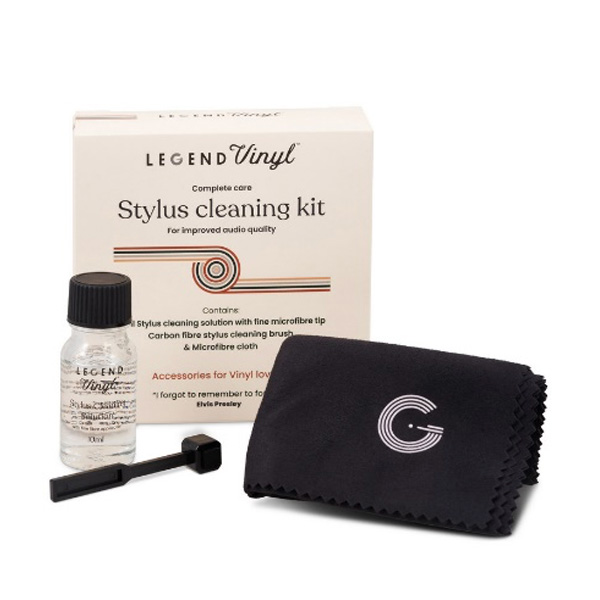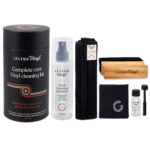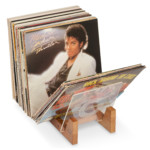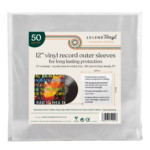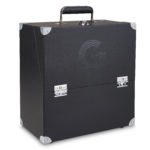The needle is the translator between the LP and the sound. You put the turntable’s arm down so the needle sits in the groove of the record and hey presto, the music plays. That needle, the stylus, is part of the cartridge, a complete little electro-mechanical device attached to the very end of the turntable’s tone arm.
The cartridge may be a small device, but in a record-playing music system, it’s probably about the most important component there is. After all, the entire playback process starts with how well the cartridge/stylus does its job as it plays the record. If it doesn’t do its job well—accurately and reliably—then nothing else that follows in the chain matters. No matter how good the amplifier may be, no matter how good the speakers or headphones may be, if the cartridge/stylus doesn’t send them a good, clean signal, they’re doomed. Makes sense, right?
A phono cartridge is a small electro-mechanical component mounted at the front of a tonearm on a turntable. There are two main sections, the cartridge body houses the wire coils that generate the electrical signals which are then transferred via the tonearm wires to the phono stage in the amplifier. The stylus assembly consists of a plastic moulding with a cantilever (or tube) and stylus (or needle) which vibrates as it traces the record grooves. The stylus is the needle shaped tip of diamond at the front end of the cantilever. (Note: A cartridge when purchased comes with the stylus assembly. Most cartridges are designed with a stylus assembly that is end-user replaceable.)
The performance potential of a record playing system is defined by the capabilities of the phono cartridge. Tonal balance, response range, clarity on musical peaks, stereo separation and imaging, and freedom from noise and distortion are all affected at the outset. The selection of this first component is critical to the full enjoyment of the rest of your system.
There are two main types of cartridges and each has their strengths and their place in the record playback world.
The “Ceramic” cartridge
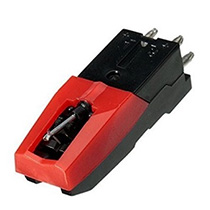
Normally held in position by a screw or metal clip.
These are common in record players from the 60’s. Originally the tips were Sapphire or Diamond but nowadays all are Diamond. Ceramic cartridges have limited frequency response compared to magnetic types, and the separation between channels is also less. They track at 4 to 7g which causes faster record wear also. The types of record players that use ceramic cartridges are not capable of high-fidelity reproduction.
The “Moving Magnet” cartridge
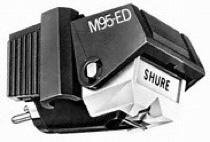 Usually have a plastic moulding with a brass tube that pushes into the cartridge body. The cantilever (usually metal) sits in a rubbery suspension block and the diamond tip is mounted at the front end. Turntables using magnetic cartridges usually track at 1.0 to 4g.
Usually have a plastic moulding with a brass tube that pushes into the cartridge body. The cantilever (usually metal) sits in a rubbery suspension block and the diamond tip is mounted at the front end. Turntables using magnetic cartridges usually track at 1.0 to 4g.
Which one is better and what are the pluses and minuses of each?
The ceramic cartridge is more rugged. You’re not anywhere near as likely to “break or bend the needle.” For demanding situations like using a Scratch turntable, that’s what you want—a rugged stylus that can take a licking and keep on ticking.
A ceramic cartridge also has a higher-level, louder electrical output, so you can feed it directly into a music system without needing any further electronic manipulation. A moving-magnet cartridge has a much softer, lower-level output so you need to amplify its signal first before it goes into the rest of the system. You’ve heard the term “phono pre-amp”? That’s what this is: a special circuit that amplifies the signal from a magnetic cartridge before that signal can be correctly processed by the main music system.
Ceramic cartridges and their replacement styli are also considerably less expensive than magnetic cartridges. Some audiophile magnetic cartridges and their replacement styli can cost hundreds of dollars!
A magnetic cartridge sounds like a big hassle. Expensive. Fragile. Needs a special pre-amp. Why put up with them?
Simple answer: They sound better, so for many people in certain situations, magnetic cartridges are worth the trouble.
They sound better because their styli are lighter (“lower mass”) and move more freely (“higher compliance”) than ceramic cartridges. These traits yield two major advantages over ceramic cartridges:
They can trace the little squiggles in the record grooves much more accurately than a ceramic cartridge can, because a magnetic cartridge is “faster” and “lighter on its feet.” You get a much better, more accurate representation (better “analogy”) of the sound from the squiggles of the record’s grooves.
There is far less record wear when using a magnetic cartridge.
Therefore, audiophiles who do a lot of critical music listening in a quiet home environment with expensive equipment tend to like magnetic cartridges, while more casual listeners are fine with the lower cost and fewer complications of a ceramic cartridge.
Why Cleaning Your Stylus Matters
For accurate sound reproduction, there needs to be close contact between the record grooves and the stylus. Dust tends to interfere with this contact and can cause a scratchy or muffled sound that will lack in detail. A stylus that’s dirty will be more likely to jump out of the grooves. Use Legend Vinyl Stylus Cleaning Kit complete with carbon fibre brush for precision cleaning. A clean stylus = improved audio quality

